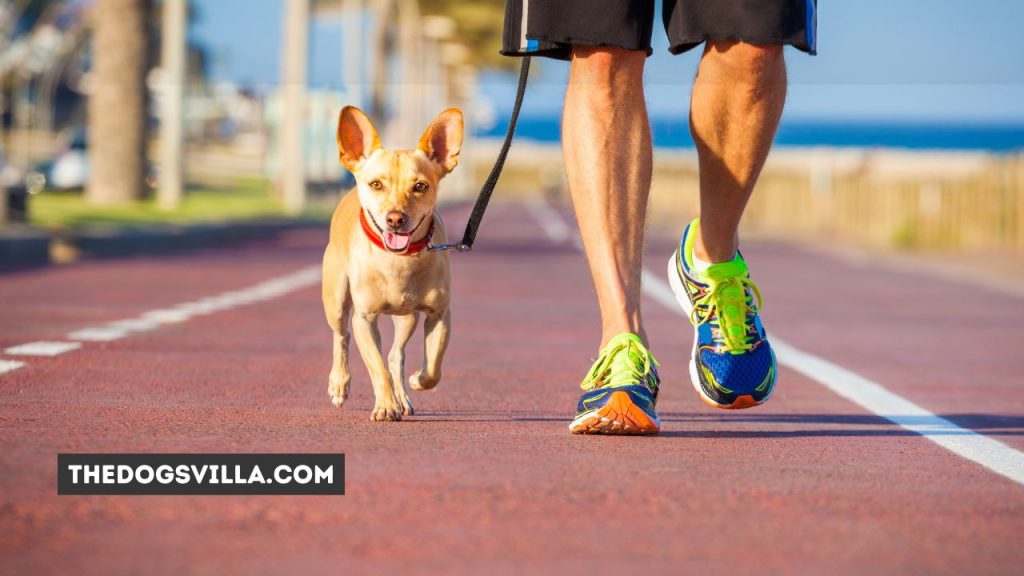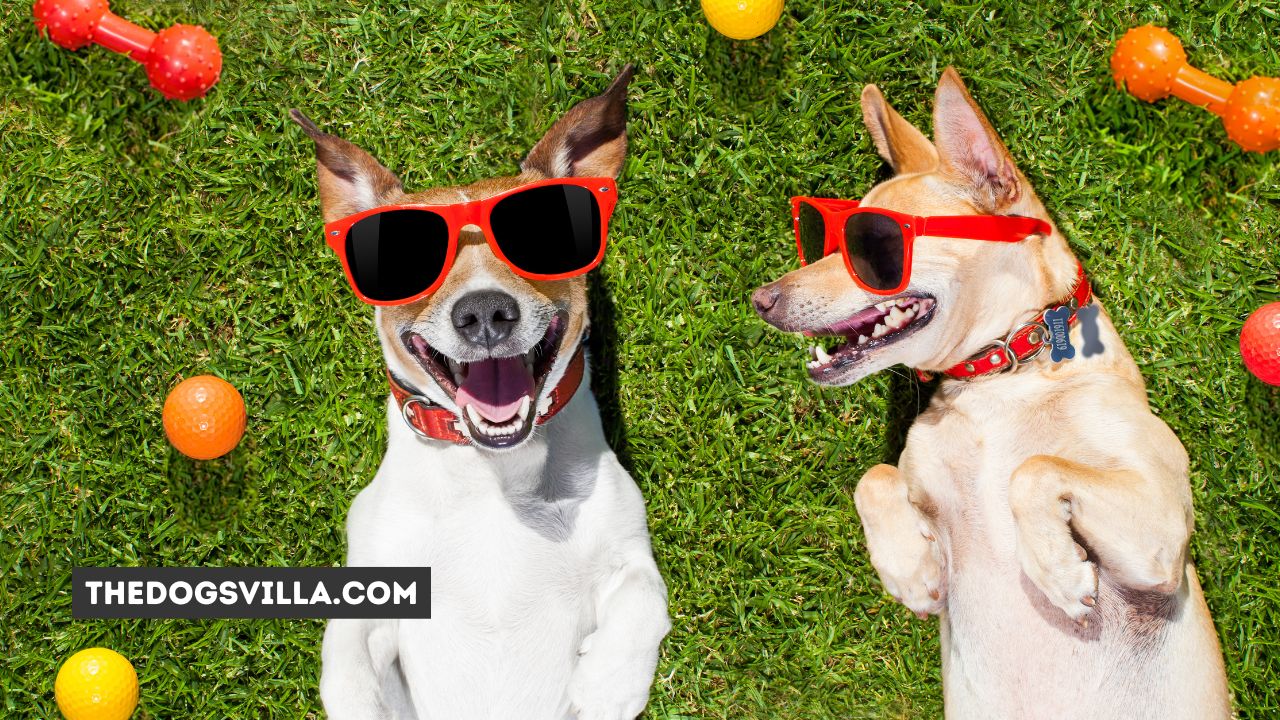Chihuahuas boast big personalities compacted in small frames. But feistiness left unchecked can morph into alarming aggression detracting from enjoying everyday moments with a beloved pet. Understanding root causes of aggressive Chihuahua conduct coupled with positive consistent behavioral modifications allows reversing frustrating tendencies hindering harmonious human-canine relationships.
Contents
- 1 How to Train an Aggressive Chihuahua
- 2 Effective Training Techniques Resolving Aggression
- 3 Medical Assessments Identifying Pain Triggers
- 4 Effective Training Aids
- 5 Common Mistakes Worsening Chihuahua Aggression
- 6 When to Seek Professional Help
- 6.1 Identify And Eliminate Triggers
- 6.2 Schedule Thorough Veterinary Evaluation
- 6.3 Acknowledge Early Warning Signs
- 6.4 Employ Force Free Reinforcement
- 6.5 Guide Gently With Proper Equipment
- 6.6 Reinforce Impulse Control Commands
- 6.7 Develop Reliable Obedience Foundation
- 6.8 Implement Structure And Peace Protocols
- 6.9 Address Resource Guarding
- 6.10 Enroll Remedial Socialization Course
- 6.11 Exercise Vigilantly
- 6.12 Adapt Games Teaching Impulse Control
- 6.13 Implement Rewards Schedules
- 6.14 Address Fearful Reactions Compassionately
- 6.15 Invest In Professional Force-Free Help
- 6.16 Commit To Ongoing Positive Conditioning
- 6.17 Upgrade Prevention Management
- 6.18 Establish Warning Cues
- 6.19 Refine Resource Management
- 7 Frequently Asked Questions
- 8 Conclusion
How to Train an Aggressive Chihuahua
Pinpointing specific environmental, social, or physical stimuli sparking your Chi’s aggressive reactions informs training approaches resolving problematic behaviors through compassionate conditioning.
Fear-Based Aggression
Timid Chihuahuas frequently resort to defensive bitter behaviors feeling endangered by perceived threats including:
- New people
- Other dogs
- Loud noises
- Sudden chaotic movement
- Being disturbed while sleeping
- Strange sights/smells
Punishing fear responses risks intensifying anxiety and mistrust. Gentle guidance building confidence minimizes knee jerk biting, snarling, or hiding reflexes in uncertain scenarios.
Possessiveness Over Objects or Territories
Chihuahuas prone to resource guarding exhibit aggression when protecting:
- Toys
- Beds
- Food (their own or human meals)
- Owner attention
- Territories like furniture or yards
Any violation of perceived possession rights sparks aggressive enforcement including guarding treasured items, chasing household members away, and claiming exclusive snuggling spots.
Response to Physical Discomfort
Pain, sickness or stress potentially prompts snippy short fuses with:
- Children poking/squeezing them
- Vet exams aggravating sore spots
- Being moved or restricted by collars/harnesses
- Having paws, ears or other sensitive body parts touched
Ruling out orthopedic, digestive or neurological pain issues through medical evaluations determines contributions to aggression aimed avoiding additional irritation.
Effective Training Techniques Resolving Aggression
Compassionate proactive measures prove more successful minimizing aggression than punishment according to experts.
Identify Early Warning Signs
Learn subtle body language hints like stiffening, hair raised neck ridges, whale eye stares, stillness, and low rumbling growls preceding reactive aggression. These telegraph rising distress. Create safe space before situations escalate into snapping and biting.
Redirect their attention with favored toys to interrupt defensive mindsets. Withdrawing from perceived threats refocuses mood versus invalidating emotions escalating frustration.
Desensitization and Counterconditioning
Employ “behavior modification therapy” using incremental exposures to problematic triggers in mild controlled instances coupled with heaping positive reinforcement through calm gentle praise, high value food treats, affection and play.
For example:
- If a Chihuahua shows aggression towards skateboarders on walks, start counterconditioning them to associate kids slowly coasting on boards at a distance with getting tasty treats and toys. Gradually decrease distances building tolerance before expecting close proximity or actual interactions.
- If they snap when having paws or ears touched, work up to handling gently for 2 seconds then 5 seconds, pairing each tiny milestone with over the top praise and rewards. Increase duration and stimulation increments only after obtaining willing unprompted permission.
Other Tips
- Practice commands reinforcing impulse control like Leave It, Drop It, or Gentle before triggers appear
- Obedience training establishes respect and willingness looking to you for direction
- Confine safely when meeting strangers until relaxing; don’t force interactions
Positive associations replace fearful or protective responses over time spent slowly acclimating.
| Common Triggers | Modifications | Sample Reward |
|---|---|---|
| New people entering home | Keep leashed, have stranger toss treats | Chicken |
| Handling paws | Briefly touch then reward, increase duration | Belly rub |
| Passing other dogs | Cross street, secure attention | Squeaky toy |
| Loud vehicles | Muffle noise levels with distance | Praise |
| Vet exams | Request handling slowly | Play tug after |
| Disturbing sleep | Announce presence before entering space | Belly rub |
Management Strategies Minimizing Triggers
Until behavior training gains traction, conscientious management limits aggression provoking opportunities through:
Containment
- Crates/barriers during visitor greetings
- Separate room timeouts when overstimulated
- Baby gates restricting access to kids’ areas
Increased Supervision
- Monitoring all interactions with children
- Paying attention on walks
- Not leaving high value items lying around
Escape Routes
- Dog proofed safe rooms
- Access to hiding spots like under furniture
Protecting chihuahuas from perceived threats maintains trust in their environment. Reducing access prevents rehearsing aggression.
Medical Assessments Identifying Pain Triggers
Veterinary exams help determine whether undisclosed physical discomfort contributes significantly to aggression tendencies.
Areas to Evaluate
Mention episodes spurring aggressive reactions so vets inspect closely for injury or illness.
Common medical culprits include:
- Ear, eye or skin infections
- Joint deterioration or bone spurs
- Dental disease/abscesses
- Gastrointestinal issues
- Neurologic decline
Bloodwork identifies organ dysfunction and hormone imbalances. Consider thyroid levels, which influence moods if unexplained behavioral changes arise suddenly.
Effective Training Aids
Incorporate supportive tools and teaching techniques accelerating training goals.
Harnesses
For small reactive dogs, traditional collars pose injury risks if allowed pulling and lunging. Try front fastening or dual connection no pull harnesses preventing choking. These maintain control with less pressure on delicate tracheas when guiding chihuahuas away from triggers during exposure training.
Properly fitted designs like the Sensation and Freedom harness avoid armpit abrasions and spinal harm. Introduce gradually ensuring comfort.
Muzzle Habituation
While extreme biting incidents may necessitate basket muzzle use safeguarding others immediately, take care associated exclusively with veterinarians, punishment or inability to pant freelysets up negative assumptions.
Through compassionate conditioning, chihuahuas can accept fabric or mesh gentle leader muzzles worn during high arousal times. Ensure proper sizing allowing treats inside to motivate wearing.
Clicker Training
Marker training uses distinct sounds “marking” then rewarding desired behavior the moment it occurs, communicating precisely what owners want repeated.
Employ clickers marking then treating any glimpse of progress during desensitization like glancing calmly at a passerby. Reward generously delivering treats swiftly not contingent on a perfect end goal of sitting still for petting but rather each microscopic improvement observed.
Calmatives and Pheromones
Supplement training easing subtle stressors with calmatives like:
- Plug in pheromone diffusers
- Pressure wraps
- Soothing music
- Massage
- Anxiety reducing nutraceuticals
Alleviating baseline unease through holistic approaches enhances cognitive awareness missing triggers when overloaded by apprehension or irritation.
Common Mistakes Worsening Chihuahua Aggression
Many well-intentioned owner reactions interpreting signals incorrectly risks exacerbating conduct issues. Avoid these ineffective responses:
Yelling, Physical Corrections or Timeouts
Punishing growling means losing the warning allowing bites to occur without notice. Harsh verbal scolding also intensifies defensiveness. While proper time outs briefly interrupting play prevent over arousal, lengthy isolation or removing affection deteriorates trust.
Tension on Leash/Collar
Restraining against their will or pulling leashes taut signals impending conflict, prompting struggling and reactive bites. Guide gently using slack leashes and harnesses instead of choke collars yanking sensitive necks.
Flooding or Forcing Interactions
Exposing aggressive chihuahuas suddenly without choice to overwhelming interactions they deem threatening—like unfamiliar guests trying to pet them—often triggers reflex biting without time first building positive associations. Let them approach newcomers voluntarily.
Ignoring Warning Signs
Punishing late stage reactive responses while overlooking subtle initial body language telegraphing distress teaches dogs to skip warnings moving directly towards bites. Respect early discomfort signals.
Disproportionate Punishment
Some owners enforce excessive zero tolerance policies banning dogs from beds over months based on single incidents of resource guarding. However, banning access long term far exceeding the original crime fails clearly communicating original reasons for punishment. Keep cause and effect timely.
When to Seek Professional Help
While simple tweaks smooth many scenarios, consult veterinary behaviorists or certified trainers if experiencing:
- Bites breaking skin
- Aggression escalating in severity not improving
- Children/seniors endangered
- Other pets injured
Serious aggression requires customized systemic intervention assessing root causes and outlining step by step treatment plans balancing accountability and compassion.
Until securing experienced guidance, refrain from ultimatums regarding rehoming or euthanasia which exacerbate stress and surrender dogs prematurely before exploring solutions. If absolutely needed, identify trusted sanctuaries equipped caring for special needs dogs.
20 Tips on Training an Aggressive Chihuahua

While small in stature, Chihuahuas boast big personalities prone to defensiveness if proper leadership is not established. Left unchecked, irritated nippy behaviors snowball into more concerning aggression. Implement these positive yet firm training tips nipping chaos in the bud restoring harmony to the whole household.
Identify And Eliminate Triggers
Pay attention to contexts consistently evoking over-the-top reactions so you can troubleshoot and desensitize your Chi through incremental positive exposures.
Schedule Thorough Veterinary Evaluation
Rule outsources of physical discomfort exacerbating aggressive reactions like dental disease, bone/joint pain, gastrointestinal issues, neurological dysfunction, eye or skin irritation and hormonal imbalances.
Acknowledge Early Warning Signs
Freeze, whale eye stares, tense muscles, raised hackles, and rumbling growls precede reactive aggression. Respect these distance seeking signals before fight instincts erupt.
Employ Force Free Reinforcement
Aggression derives from fear. Harsh physical or verbal scolding fuels defensive escalations forfeiting trust. Motivate mutually respectful compliance using praise, affection and high value food rewards instead.
Guide Gently With Proper Equipment
Ditch choke collars and retractable leashes promoting pulling and choking risks. Control reactivity more safely with front clip harnesses allowing better steering away from triggers during training.
Reinforce Impulse Control Commands
Bolster behavioral inhibition against acting on emotionally-fueled urges through protocols like Leave It, Drop It, Look At Me, and Gentle handling exercises. Boost restraint capacity minimizing reactions.
Develop Reliable Obedience Foundation
Well-practiced compliance with basic cues like Sit, Down, Stay, Come, Heel and Loose Leash Walking cultivates willing collaboration looking to you for guidance through uncertainty.
Implement Structure And Peace Protocols
Settle high energy upon returning home before affection. Discourage begging, jumping or demanding attention. Rule roosts and beds promote security. Confine safely when hosting strangers.
Address Resource Guarding
If your Chi shows possessiveness with food toys or furniture, use gentle counterconditioning and reward voluntary sharing. Banning access escalates perceived competition.
Enroll Remedial Socialization Course
Well-run classes overhaul under socialization using force-free conditioning around reasonable dogs and people while protecting yours from negativegreetings.
Exercise Vigilantly
Guarantee 45-60 minutes daily venting energy and relieving boredom’s restlessness through leashed walks, games, training and enrichment toys. Both physical and mental exercise matters.
Adapt Games Teaching Impulse Control
Mentally exhausting activities like fetching balls or Frisbees, hiding treats around the house for seeking, and tricky training reinforce composure around intense triggers.
Implement Rewards Schedules
Reinforce desired behavior within 1-3 seconds. Vary up “payment” using food, toys and praise preventing habituation ensuring effectiveness motivating cooperation.
Address Fearful Reactions Compassionately
Anxious, scared or overwhelmed dogs need protected headspace restoring security. Provide escape routes, ear muffs buffering noise, or comforting hides. Never force stressful interactions exceeding current abilities.
Invest In Professional Force-Free Help
Certified specialists devise systematic treatment plans safely managing and resolving aggression. Select trainers focused on rehabilitation eschewing physical intimidation and flooding traumatizing dogs.
Commit To Ongoing Positive Conditioning
Prescribed behavior modification therapy requires immense diligence and patience overhauling associations. Celebrate microscopic progress. Refrain from scolding setbacks typical of gradual change.
Upgrade Prevention Management
Eliminate rehearsing unwanted habits through distraction, confinement away from triggers and direct supervision preventing sneaky misbehavior. Gate off rooms hosting commotion.
Establish Warning Cues
Verbal cautions like “Too Bad” interrupt and redirect conduct going awry. This prompts self-control avoiding escalating to corrections. It also gives feedback inhibits bites lacking appropriate warning signals.
Refine Resource Management
Rotating abundant toys, splitting treats, scheduling coveted activities and using placeholder cues like Back Up and Leave It smooths turn taking teaching patience handling limitations.
| Unwanted Behavior | Alternative Wanted Behavior | Reward |
|---|---|---|
| Barking at passerby dogs | Quiet observance | Treat |
| Nipping kids’ ankles | Settling on dog bed | Belly rub |
| Resource guarding food bowl | Calmly eating after family approaches | Piece of chicken |
Frequently Asked Questions
Are chihuahuas aggressive by nature?
Chihuahuas attract sensational media coverage for notorious biting. However, studies indicate chihuahuas direct most aggressive displays towards familiar people not strangers, suggesting anxiety-fueled reactions supersede innate aggression. Their tiny size intensifies defensive instincts when intimidated by louder, larger beings in their environment. Proper socialization prevents this.
How do I socialize an aggressive chihuahua?
Socialization requires gently exposing chihuahuas to novel everyday sights and sounds between 3-16 weeks when most receptive to habituating stimuli like people wearing hats, skateboards rolling or food processors whirring. Make pleasant associations with praise and food rewards. Adult rescue chihuahuas benefit from gradual positive introductions also. Never flood or force uneasy dogs exceeding comfort zones.
Are shock or vibration collars humane for chihuahuas?
Vibration, spray, or shock devices rely on scolding dogs for unwanted behaviors absent clear instruction on desired alternatives. This erodes human-animal bonds and are opposed by veterinary experts. Physically and emotionally sensitive chihuahuas benefit most from motivation through engaging reward based training and counterconditioning under professional guidance.
Conclusion
At under 6 pounds, Chihuahuas represent the very definition of “little dog syndrome” overcompensating out of even mildly perceived vulnerability. But writing them off as hopelessly aggressive condemns sensitive, bright dogs to limited lives stripped of deserved affection and inclusion.
Leading with patience, compassion and canine fluent training techniques responsive to their unique personality combats unwarranted bias against loving pets handicapped more by size than nature. Protecting chihuahuas from rude overhandling while slowly conditioning acceptance of stimuli once frightening remains key. Celebrate baby step victories!
While their spirited sass won’t dull, respectful leadership helps big personalities not become prisoners of anxiety and aggression destroying beautiful bonds with caring owners. Consistent positive redirection allows them channeling feistiness into lively fun minus harmful defense. Put in effort and enjoy the delightful dog behind the bluster for years to come!
Additional Chihuahua Aggression Resources:
Whole Dog Journal Training Article
UC Davis Counseling Recommendations
More Helpful Article That Might Help You
Why is My Beagle so Aggressive

